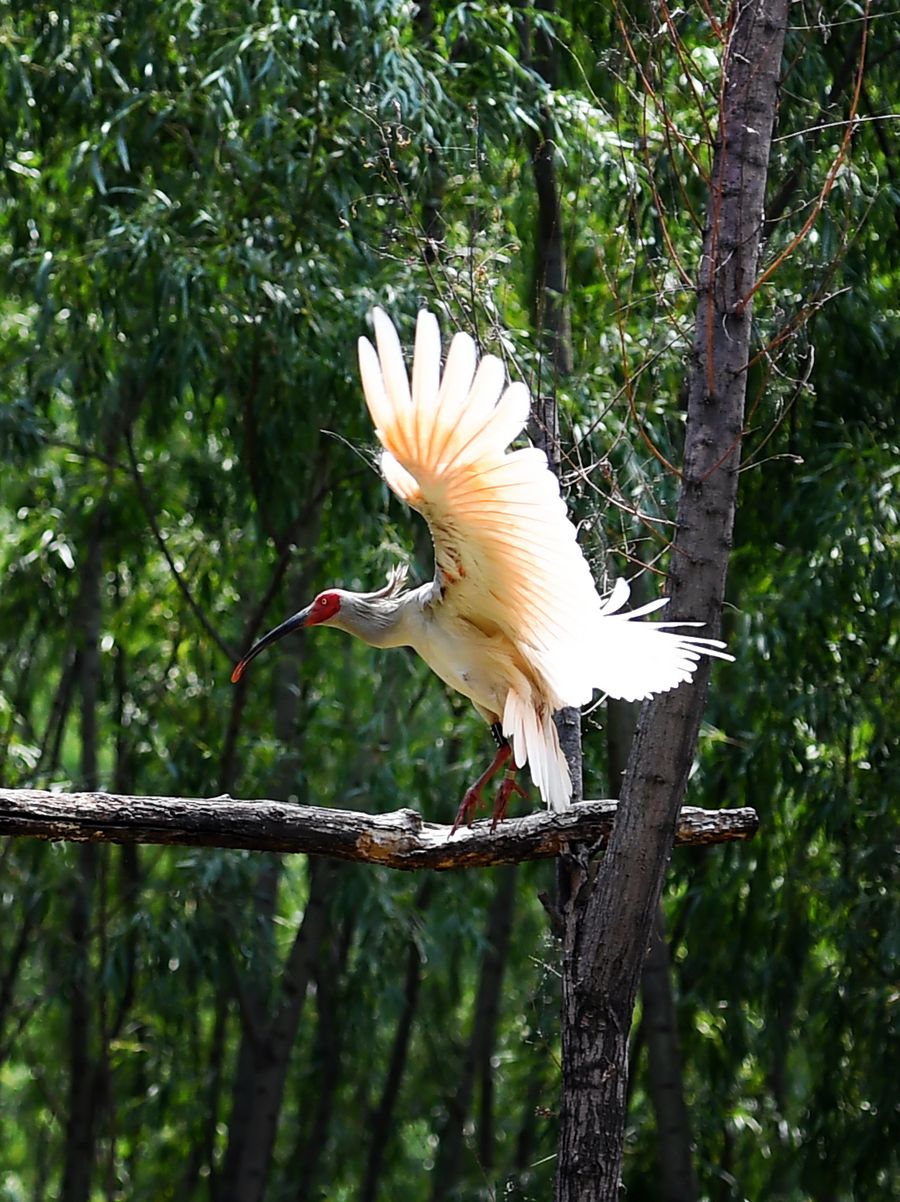
A crested ibis is seen at a wild training base in Tongchuan City, northwest China's Shaanxi Province, June 13, 2019. (Xinhua/Liu Xiao)
Crested ibis, once considered extinct, now numbers over 3,000 in China.
XI'AN, Dec. 30 (Xinhua) -- The crested ibis, an endangered bird once thought to be extinct known as the "Oriental gem," is thriving thanks to decades of joint cooperation between China and Japan.
As one of the oldest bird species in the world, the wild crested ibis, with its iconic red crest and long black beak, was believed to be extinct in China until seven wild birds were observed by Chinese ornithologist Liu Yinzeng and his research team in 1981 in Yangxian County, northwest China's Shaanxi Province.
"We felt both excited and pressured after the discovery," said Lu Baozhong, then head of the crested ibis protection team. "Team members safeguarded the birds 24 hours a day, spreading butter on trees and installing protective devices to deal with their natural enemies such as snakes."
The crested ibis population has been increasing since then with the joint protection work between China and Japan. China started captive breeding of crested ibises in 1991, breeding more than 400 birds in Shaanxi and expanding their habitats. China now has more than 3,000 crested ibises.
China donated five crested ibises to help rebuild the species in Japan in the 1990s, while Japan has been supporting the protection of the crested ibis habitat in China through both governmental and non-governmental projects.
As an iconic bird deeply rooted in Japanese history and culture, the crested ibis had decreased in number in the 20th century and Japanese-born ibises became extinct in 2003. The crested ibises in Japan today, more than 500 in number, are all descendants of those from China.
"Crested ibises have become a bridge of friendship between China and Japan, and we hope there will be more such exchanges in the future," said Yoshinori Kaneko, a vet at the Sado Japanese Crested Ibis Conservation Center.
"In recent years, Yangxian County has allocated more than 260 hectares of mountainous areas for forest conservation and restored over 230 hectares of natural wetlands, creating a suitable habitat for crested ibis," said Du Jiacai, head of the county government.■



